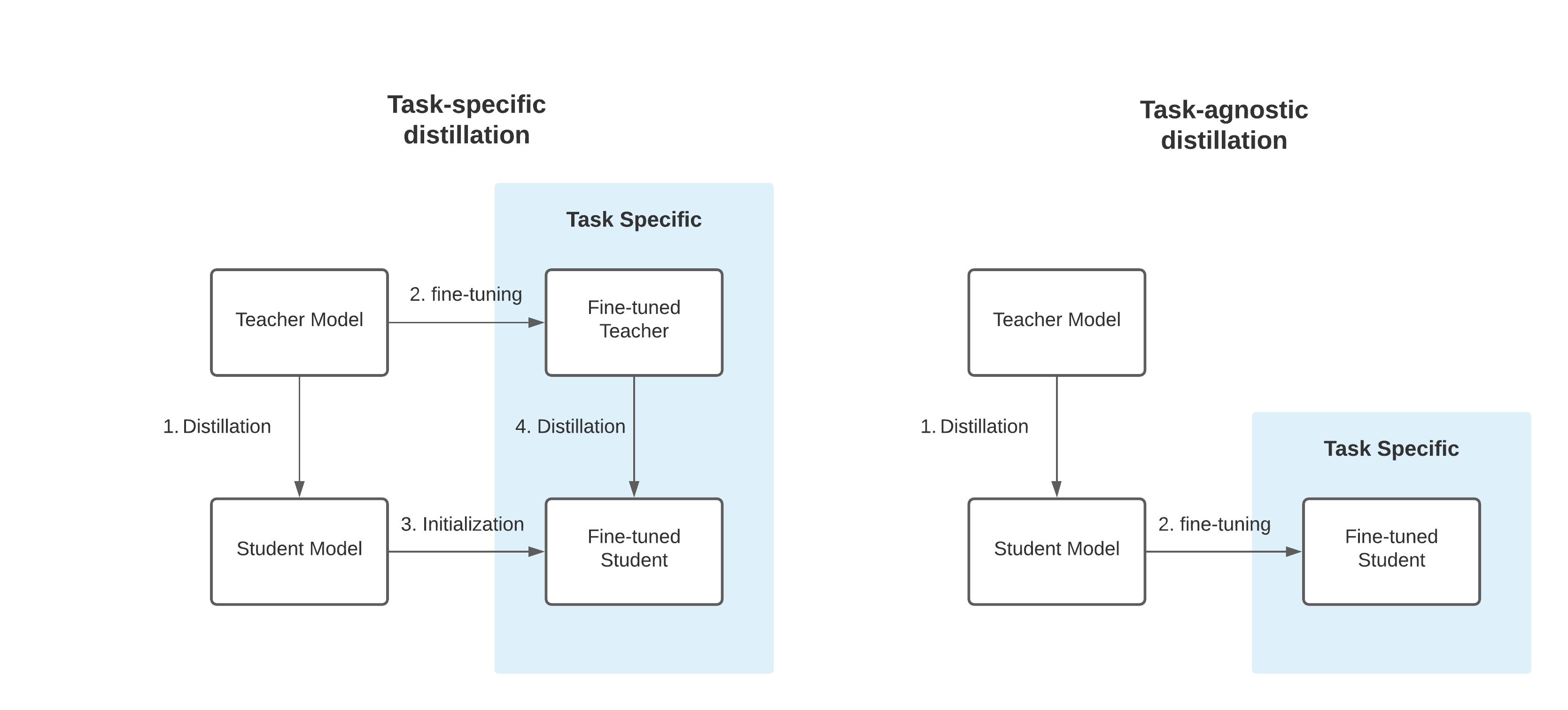This Repository contains to Notebooks:
- knowledge-distillation a step-by-step example on how distil the knowledge from the teacher to the student.
- sagemaker-distillation a derived version of the first notebook, which shows how to scale your training for automatic HPO using Amazon SageMaker.
Welcome to our end-to-end task-specific knowledge distilattion Text-Classification example using Transformers, PyTorch & Amazon SageMaker. Distillation is the process of training a small "student" to mimic a larger "teacher". In this example, we will use BERT-base as Teacher and BERT-Tiny as Student. We will use Text-Classification as task-specific knowledge distillation task and the Stanford Sentiment Treebank v2 (SST-2) dataset for training.
They are two different types of knowledge distillation, the Task-agnostic knowledge distillation (right) and the Task-specific knowledge distillation (left). In this example we are going to use the Task-specific knowledge distillation.
 Task-specific distillation (left) versus task-agnostic distillation (right). Figure from FastFormers by Y. Kim and H. Awadalla [arXiv:2010.13382].
Task-specific distillation (left) versus task-agnostic distillation (right). Figure from FastFormers by Y. Kim and H. Awadalla [arXiv:2010.13382].
In Task-specific knowledge distillation a "second step of distillation" is used to "fine-tune" the model on a given dataset. This idea comes from the DistilBERT paper where it was shown that a student performed better than simply finetuning the distilled language model:
We also studied whether we could add another step of distillation during the adaptation phase by fine-tuning DistilBERT on SQuAD using a BERT model previously fine-tuned on SQuAD as a teacher for an additional term in the loss (knowledge distillation). In this setting, there are thus two successive steps of distillation, one during the pre-training phase and one during the adaptation phase. In this case, we were able to reach interesting performances given the size of the model:79.8 F1 and 70.4 EM, i.e. within 3 points of the full model.
If you are more interested in those topics you should defintely read:
- DistilBERT, a distilled version of BERT: smaller, faster, cheaper and lighter
- FastFormers: Highly Efficient Transformer Models for Natural Language Understanding
Especially the FastFormers paper contains great research on what works and doesn't work when using knowledge distillation.